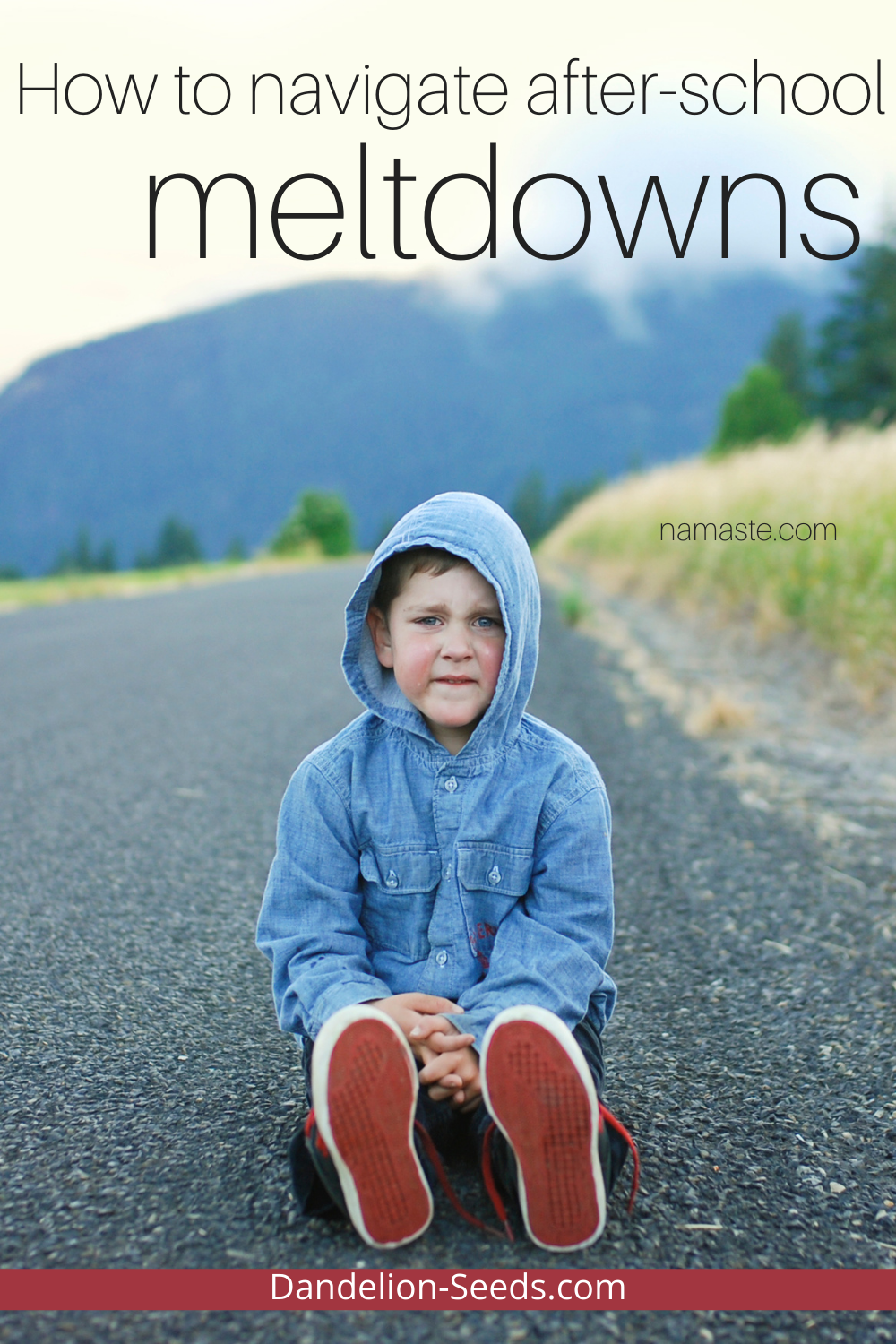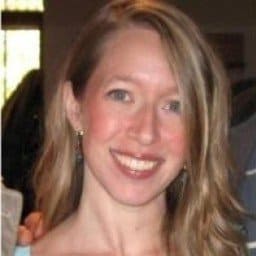
Sign in
Don't have an account with us? Sign up using the form below and get some free bonuses!

After-school restraint collapse is a fancy way to say after-school meltdowns. And I want you to know this: they're normal. In fact, they're downright common and can happen to all kids.
More on that in a moment. Here's what the reality feels like, though: it's messy.
You may be eagerly and happily awaiting the arrival of your child as they come home from school, anticipating they'll be full of stories and wonder -- then BOOM. It's like a tsunami rolls in your front door and you're left with the emotional aftermath (not to mention all the cleanup).
What's going on?

After-school restraint collapse is a meltdown that a child experiences after school, and specifically as a result of their school experience.
While the after-school restraint collapse can affect all kids, it can be more prominent in sensitive children with learning or socialization problems. Further vulnerabilities, like a lack of sleep, hunger, overstimulation, or sickness, may result in even the most even-keeled child losing control at home. (source)
Does this mean there's something wrong with your child? Are they TOO sensitive or do they have a "socialization problem?" Does it mean they hate school and you shouldn't send them back? Probably not at all. They're probably just overwhelmed and having a good old fashioned meltdown.
Having meltdowns doesn't mean children are regressing to the toddler years (unless, ahem, they're actual toddlers). It just means they're human, having big human feelings like every other person on Earth. We all get overwhelmed sometimes.
Because they're kids, though, they need some special support when they get home -- along with some specific tools to help them decompress.
For all children, school may or may not be a safe place emotionally. That doesn't necessarily mean that "unsafe" things are happening at school.
To the contrary, it simply means that school can be overwhelming, even for kids who absolutely love school.
However, unlike at home where children generally feel free to be themselves, school is about conformity. School is about obeying the rules; about being quiet; and not being disruptive in class. To a point, having a predictably calm learning environment is essential for learning to happen in a group setting.
As such, except at designated free times, children are generally expected to contain their energy and behave a certain way.
To be clear, I'm not dissing schools. In their defense, schools -- and teachers in particular -- are almost invariably doing the best they can with the resources they have. Still, there's a schedule to be followed. Adults often enforce certain rules with the intent of helping children learn and progress academically. Teachers simply can't slow down much when one or two (or more) children are waffling emotionally while the rest of the class is waiting. There's work to do.
What happens to all the children's pent-up energy, though? If they can't let it out through playing, roughhousing, and moving whenever and however they feel called to do, it has to go somewhere.
In many cases, children simply bottle it up and save it for when they get home.
School can sometimes feel like a pressure cooker with no release valve.
Kids need to decompress. Especially for the child who behaves well by the school's standards and you know is under a lot of pressure, we, as the adults, need to create a safe space for them to process what happens at school every day. If they don't decompress, it's a sure-fire recipe for upheaval.
Incidentally, these restraint collapse meltdowns differ from tantrums in some notable ways.

A tantrum is a child's big reaction when something happens that they feel was out of their control. They have strong feelings that things should've gone their way. It's often tried to a specific frustration.
Example of a tantrum: Your child has been mentally planning for a sandwich for lunch. You serve pasta. They express their displeasure loudly, perhaps seeming to lose all sense of self-control in the interim.
A meltdown is the release of stored emotion, with or without a clear and identifiable cause. It may manifest as something that seems small to the adult, such as the color of the child's cup -- but really, it's the proverbial straw that broke the camel's back. It's often associated with feelings of overwhelm.
Example of a meltdown: A child sits down to start their homework. Rather than happily starting in on it, they start to yell about the homework, not wanting to feed the cat, not wanting to take a bath, etc. Suddenly it feels like everything is wrong.
Parenting is hard when you're unsure where to begin soothing the child.
As a parent and parent educator, I choose to reframe the word "meltdown" as an "emotional release." I've never liked the term "meltdown" because, for many people, it ascribes a negative connotation with completely normal behavior. It's healthy to get our feelings out. We all need effective decompression strategies that support our mental health.
For children, crying and "acting out" are often their natural ways to connect with us. If we're responsive in supporting them, it reinforces to their brains that the world is a safe place.
That doesn't mean that all behavior is acceptable; but the expression of emotions certainly is. This is part of growing their emotional regulation skills. They learn that it's safe to feel their feelings.
Here are some specific steps we can take to support our kids and help them through restraint collapse.
The only things you can predict are that your kids will
...but there's no way to know in advance what that something is. Parents often naturally assume that when their kids get home, they'll be happy. As we know, though, that's not always the case.
Sometimes it helps to have a phrase to repeat to yourself before your child comes home. For example, "I wonder what my child will be feeling today."
In doing so, you bring yourself to a place of neutrality. You remove your expectations and set the stage for holding space for whatever your child may be feeling.
An overwhelmed child doesn't need to be rushed to the next big event. If they enjoy extracurricular activities and events, that's wonderful -- and they still need downtime. No child needs to practice "burning the candle at both ends" before they even reach adulthood; that only leads to future burned out grown ups.
Kim John Payne, M.Ed., speaks extensively about this critical need for balanced and planned downtime, including here in this recent interview. Even the busiest and most social kids need quiet time to relax and regroup.
What does this downtime look like? For some, it's time together outside in nature, walking or riding a bike; others just need some space to be alone and process. Still others want to talk and connect with you. Of course, they may feel different emotions day-to-day and their needs for support may change.
Perhaps the most important stress-busting tool to help them deal with stress in healthy ways every single day is the next point: play.
Kids spend all day at school moving from one highly structured event to the next, save, perhaps, for recess. When we allow more of it, though, here's what happens:
"Recent research suggests that children should experience twice as much unstructured time as structured play experiences and touts the benefits of unstructured play on whole child development including fostering social competence, respect for rules, self-discipline, aggression control, problem solving skills, leadership development, conflict resolution, and playing by the rules." (source)
When children don't have enough play time, their stress levels go up. It makes them suffer not only emotionally, but also physically (source). It then takes less extra stress to push them into meltdown land, so why not lower their stress by doing that which comes most naturally to them -- more play?
When your child gets home, I recommend you greet them with these three things:
For many kids, it's just plain hard to be away from you -- the person they love most in the world. Many people wrongly believe that after a certain age, separation anxiety should no longer exist.
In truth, we all miss our loved ones sometimes. Healthy separation anxiety, to some degree, should last forever. It means they care.
If separation anxiety is an issue, you can do several things to stay connected even when you're apart. Here are some starting points.
As Drs. Daniel J. Siegel and Tina Payne Bryson say, "Name it to frame it." Help your child name what they're feeling. Some kids may not even realize the "energy burden" they've been shouldering all day.
Some benefit from having a calm-down corner (which is NOT a time-out), whereas others prefer to co-regulate. Follow their lead. No matter their preference, the key message you want to convey is "You and all your feelings are safe here for as long as you need to express them." Being their rock helps create and/or reinforce their secure attachment to you.
Parenting is hard enough without us having to feel responsible for our child's after-school restraint collapse. Know that you didn't cause the restraint collapse; you're their safe person with whom to express it. Figure out what you need to feel peaceful regardless of whatever emotions roll in alongside your child.
When you can be their calm and know that you're their source of security and safety, this is what matters most. You're there for them. Keep showing up, and soon enough, they'll lean more fully into the peace they call Home.
